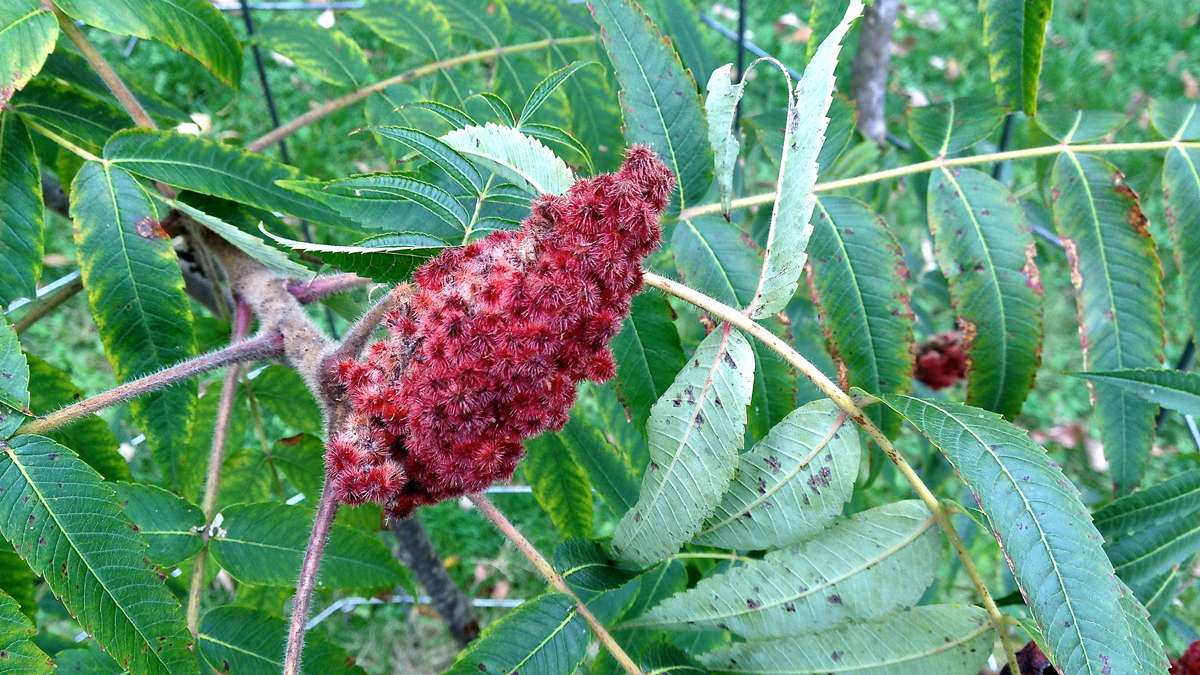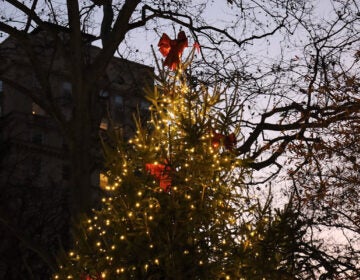N.J. author cooks up delicacies from plants some consider weeds
On a magnificent fall day, Tama Matsuoka Wong is making fruit leather in her New Jersey kitchen. The fruit she’s using? Bright red berries from the autumn olive tree. She has foraged for the “olive” from a popular 20th-century landscaping tree, now known to be a major non-native invasive.
“My philosophy is, it’s OK to pick non-native invasives in the wild because it’s a way of controlling them,” said Wong, who won the New Jersey Forest Stewardship Award from the N.J. Forest Service in 2007.
Wong’s book, “Foraged Flavor,” shows how to turn weeds, wild plants, and invasives into food and drink. What sets her apart from the hordes of wild edibles book writers is that hers is not about how to boil cattail for survival when you’ve been lost in the woods for five days – although she does offer recipes for pickled cattail shoots and summer rolls with cattail and trout.
For “Foraged Flavor,” Wong teamed up with chef Eddy Leroux of New York’s Michelin triple-starred restaurant Daniel to create palate pleasers from purslane, creeping Jenny, wild mustard greens, daylilies and wisteria flowers.
At Brick Farm Market in Hopewell, N.J.,Wong and chef Mark Drabich, owner of Metropolitan Seafood and Gourmet Products in Lebanon, N.J., will prepare a five-course dinner of foraged flavor Nov. 1. The event is sold out, but there is a waiting list. Wong’s sumac, za’atar and pawpaw ice cream (made by Bent Spoon) are available at Brick Farm Market, and her wild foraged produce is regularly served at Daniel, Gramercy Tavern, ACME and Marc Forgione.
Wong lives on 28 acres in the Flemington countryside, surrounded by preserved land. Enter through the deer gate and you’re in a world where plants are free to do it their way. Since moving here in 2003 with her husband and three daughters, Wong planted phlox, aster and black-eyed Susan, all of which migrated to places where the sun and soil were more to their liking.
Mown paths wend their way through fields of eupatorium (Joe Pyeweed), goldenrod and Indian grass, luring butterflies and dragonflies. The meadow started out feeding wildlife before Wong realized it could also feed her family.
From the refrigerator Wong takes out chestnuts – these are a cross between the American and Chinese chestnuts, a strain under development to help replace the American chestnut, wiped out by blight in the 20th century. The nuts are smaller than the European chestnuts enjoyed from New York street vendors in November.
From a window of the centuries-old farmhouse a visitor can see raised beds, surrounded by a fence made of local twigs. In the beginning Wong tried growing vegetables in these beds, but couldn’t keep up with the weeds until she discovered the weeds were also edible. “You don’t have to go to the Adirondacks to forage,” she said. “You can do it right in your backyard.”
Growing now is foxtail millet, which looks like a grassy weed but provides a gluten-free grain that can be used in granola. She puts the dried plants into a plastic bucket, shakes, and voila – millet.
Alongside the fence is a sumac tree she is cultivating, with a fence to protect it from deer. Her sumac-ade is a bright red thirst quencher and can be incorporated into a cocktail.
She also makes za’atar, a Lebanese seasoning.
Just ripening at the edge of the garden is pawpaw, a native tree whose fruit is shaped like a mango and has a banana-y flavor. Wong uses it to make pawpaw hickory nut breakfast cake.
If a tree grows on a farm, can you still call it wild? Can you still use the word foraging? Wild farming, Wong says, uses no fertilization or irrigation, just lets the plants grow the way they do in nature, but lightly managed.
A mile or so up the road Wong is experimenting with wild-farmed sumac. Begun with a Kickstarter campaign, she planted male and female specimens. “Sumac is high in Vitamins A and C, and has more antioxidants than blueberries,” she says. It is ideally harvested in late August to early September, before the berries dry out.
The native sumac along roadsides is Staghorn sumac. Poison sumac has small white berries in loose clusters and is easily distinguished from the red sumac. Nevertheless, it is not advisable for a novice to forage for edibles for a number of reasons, ranging from over harvesting and misidentification, lack of permission from landowners and knowing whether the plants were sprayed. Wong advocates growing your own wild edibles.
Growing up in Basking Ridge, Wong’s mother tried to get her to eat dandelion greens from the garden. “She loved gardening and feeling the dirt,” said Wong, whose sentiments about her mother’s bitter dandelion greens salad were not quite as adoring.
Now Wong realizes the value of bitter greens, much higher in phytonutrients than plants that have had these bred out. “Wild dandelions have seven times more phytonutrients than spinach – it’s the glue that holds vitamins together to help the body absorb them. Wild foods have not been coddled, made starchy and sweet – they had to survive, and put out chemicals to combat insects in order to thrive. These chemicals are phytonutrients and antioxidants. If you pamper your food too much it becomes soft and weak.”
“Foraged Flavor” includes recipes for dandelion flower jelly and tempura. “You have to pick dandelion greens before the plant flowers, when they are tender and sweet.”
Wong worked for more than 25 years as a financial services lawyer in Tokyo, New York and Hong Kong. In 2009, friends from Princeton invited Tama and her husband Wil to dine at Daniel – Wong had never heard of restaurateur Daniel Boulud. The friends told Wong to bring some plants from her meadow. She brought these in a plastic bag and, also at the suggestion of the friends, explained the terroir, and asked if they could be cooked into the evening’s meal. Chef Leroux prepared two dishes, and later Wong went into the kitchen to thank him. He asked if she had more, and when she asked what he would like, he replied “everything.”
Thus began the attorney’s weekly commutes with a large plastic garbage bag filled with wild plants, squeezing in with fellow train passengers, then walking 10 blocks with her sack. Leroux offered to pay, but for the first year, Wong only asked for recipes in exchange.
Wong sends me on my way with a container of her za’atar and a tray of chestnuts. At home, I sprinkle the za’atar on my oatmeal, as she recommended. Indeed it turns a bowl of mush into a tart and tangy sensation.
Related links:
Tama Matsuoka Wong talks about foraging for weeds at TEDxManhattan
___________________________________________________
The Artful Blogger is written by Ilene Dube and offers a look inside the art world of the greater Princeton area. Ilene Dube is an award-winning arts writer and editor, as well as an artist, curator and activist for the arts.
WHYY is your source for fact-based, in-depth journalism and information. As a nonprofit organization, we rely on financial support from readers like you. Please give today.













